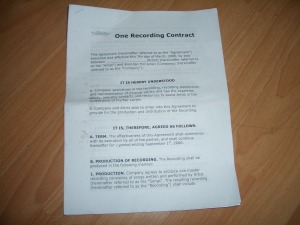By Taylor N. Jones
As North Carolina courts resume in-person oral arguments,[1] small businesses wait to see when the significant case, North State Deli, LLC v. Cincinnati Ins. Co.,[2] will be scheduled for oral argument. Described as a “groundbreaking and powerful win for policyholders during this era of economic devastation for small businesses,”[3] North State Deli was one of the first COVID-19-related insurance cases nationwide in which a court granted summary judgment in favor of policyholders on a business interruption claim.[4] Sixteen restaurants (collectively “Plaintiffs”), located in the Raleigh-Durham area, filed suit against their property insurer, Cincinnati Insurance Company (“Cincinnati”).[5] The case was heard in the Durham County Superior Court,[6] and Cincinnati has since appealed.[7]
At issue before the Superior Court were two key provisions in Plaintiffs’ “all risk” property insurance contracts: the “Business Income” and “Extra Expense” provisions.[8] These provisions provide:
(1) Business Income
We will pay for the actual loss of “Business Income” . . . you sustain due to the necessary “suspension” of your “operations” during the “period of restoration.” The “suspension” must be caused by direct “loss” to property . . . .
(2) Extra Expense
We will pay Extra Expense you sustain during the “period of restoration” . . . .[9]
Under the policies, “loss” is defined as “accidental physical loss or accidental physical damage.”[10] Notably, the policies do not define “physical loss” or “physical damage.”[11]
Plaintiffs filed a motion for partial summary judgment, seeking a declaratory judgement that governmental orders and travel restrictions issued during the pandemic and the resulting restaurant closures constitute a “direct loss” under the policies.[12] Opposing the motion, Cincinnati argued that coverage under the policies does not apply in the absence of direct physical loss of or structural alteration of the insured property.[13] Moreover, in April 2020, Cincinnati wrote in its 10-Q filing that “no coverage exists” for COVID-19-related claims because a virus “does not produce direct physical damage or loss to property.”[14]
In ruling on Plaintiffs’ motion, the judge rejected Cincinnati’s argument that both “physical loss” and “physical damage” require alteration of the insured property.[15] Because the policy lacked definitions for several key terms, he resorted to dictionary definitions to shed light on the terms used in the policies.[16] The judge found “direct physical loss” could describe a “scenario where businessowners and their employees . . . lose the full range of rights . . . of using or accessing their business property.”[17] Ultimately, because he found the language to be ambiguous,[18] and the policies do not contain a virus exclusion,[19] the judge granted Plaintiffs’ motion for partial summary judgment, requiring Cincinnati to pay business interruption coverage for losses suffered while the restaurants were closed.[20]
A combination of factors may lead the Court of Appeals to reverse the trial court’s ruling. First, the judge failed to cite any North Carolina case law interpreting phrases similar to “accident physical loss or accident physical damage.”[21] Notably, the judge failed to cite Harry’s Cadillac-Pontiac-GMC Truck Co., Inc. v. Motors Ins. Co.[22] In Harry’s Cadillac, the North Carolina Court of Appeals held that a business interruption provision providing coverage in the event of “direct physical loss of or damage to property” during the “period of restoration” only applied to losses requiring building repair or replacement.[23] Harry’s Cadillac is clearly relevant to this case, as it sheds light on the interpretation of both the Business Income and Extra Expense provisions.
Second, though the judge quoted a North Carolina case to the effect that “[t]he various terms of the policy are to be harmoniously construed, and if possible, every word and every provision is to be given effect,”[24] his interpretation does not account for the “period of restoration” language found in both the Business Income and Extra Expense provisions. As discussed in Summit Hospitality Group, Ltd. v. Cincinnati Ins. Co.,[25] the “restoration period” terminating at the time when the property should be repaired or replaced supports Cincinnati’s argument that coverage under either the “physical loss” or the “physical damage” language requires alteration to the insured property.[26] In the absence of physical alteration of the property, there would be nothing to restore during the “period of restoration.”[27]
Third, the ruling deviates from the vast majority of COVID-19-related business interruption rulings.[28] Though COVID-19-related litigation throughout the country necessarily turns on the specific language of the disputed policies and the applicable state insurance laws, at the time of the judge’s order, roughly 75% of claims in the country had been dismissed by the summary judgement stage in favor of the insurer.[29] Early cases, such as Sandy Point Dental, PC v. Cincinnati Ins. Co.,[30] held that “direct physical loss” “unambiguously requires some form of actual, physical damage to the insured premises to trigger coverage.”[31] Cases that deviated from this line of reasoning, such as Studio 417 v. Cincinnati Ins. Co.,[32] merely allowed the insured to survive the insurance company’s Rule 12(b)(6) motion to dismiss.[33] These cases did not make the substantial leap of granting summary judgment in favor of the insureds.[34]
Fourth, and finally, most subsequent cases have rejected the decision in North State Deli.[35] Notably, three such cases which dismissed the ruling as a minority view involved similar policies issued by Cincinnati.[36] Pulling no punches, in Kevin Barry Fine Art Associates v. Sentinel Ins. Co.,[37] the United States District Court for the Northern District of California rejected North State Deli as “not persuasive,” “[d]ue to its lack of analysis and the vast majority of courts contradicting this finding.”[38] The overwhelming lack of support for the case and such harsh criticism may prove decisive as the North Carolina Court of Appeals hears the case on appeal.
Mike Causey, North Carolina’s Insurance Commissioner, cautioned businesses in April 2020 that, “Standard business interruption policies are not designed to provide coverage for viruses, diseases, or pandemic-related losses because of the magnitude of the potential losses.”[39] In his letter to the business community, he wrote, “We can’t legally force insurers to cover a risk which they didn’t intend to cover . . . .”[40] Though the North State Deli case has not yet been placed on the Court of Appeals’ publicly available calendar,[41] it will be an important case with implications for both small business owners and the insurance industry. As one federal magistrate judge cogently summarized the competing values, “The Court is sympathetic to the difficult and unprecedented circumstances facing Plaintiffs and similar businesses. But at face value, COVID-19 harms people and not property.”[42]
[1] Press Release, North Carolina Judicial Branch, Court of Appeals to Resume In-Person Oral Arguments in August (July 27, 2021), https://www.nccourts.gov/news/tag/press-release/court-of-appeals-to-resume-in-person-oral-arguments-in-august.
[2] No. 20-CVS-02569, 2020 N.C. Super. LEXIS 38 (Oct. 7, 2020), appeal docketed, No. 21-293 (N.C. Ct. App. June 09, 2021).
[3] Paynter Law Secures Landmark Victory: NC Court Finds Cincinnati Insurance Must Pay Business Interruption Coverage to 16 Area Restaurants for COVID-related Government Shutdown Orders, Paynter Law, https://www.paynterlaw.com/covid-19-business-insurance-litigation/ (last visited Sept. 23, 2021).
[4] See id. (describing the North State Deli case as “the first case in the country requiring an insurance company to pay” business interruption losses and referencing key documents in the case including the order granting partial summary judgment).
[5] Id.
[6] See N. State Deli, 2020 N.C. Super. LEXIS 38.
[7] See Kimberly Marston, Appeal Information Statement: Case: N. State Deli, LLC v. The Cincinnati Ins. Co. (21-293) Civil, N.C. Supreme Ct. & Ct. Appeals Elec. Filing Site & Document Libr., https://www.ncappellatecourts.org/ais-view.php?sDocketNumber=21-293 (last visited Sept. 23, 2021). Plaintiffs sought immediate review by the Supreme Court of North Carolina through a petition for discretionary review before determination by the Court of Appeals under N.C. Gen. Stat. § 7A-31(b), but this motion was dismissed by the Supreme Court of North Carolina in an unpublished opinion. N. State Deli, LLC v. Cincinnati Ins. Co., No. 225P21-1, 2021 N.C. LEXIS 783 (Aug. 10, 2021).
[8] N. State Deli, 2020 N.C. Super LEXIS 38, at *3.
[9] Id.
[10] Id.
[11] Id. at *3–4.
[12] See Memorandum in Support of Plaintiffs’ Motion for Partial Summary Judgment at 28, N. State Deli, LLC v. Cincinnati Ins. Co., No. 20-CVS-02569, 2020 N.C. Super. LEXIS 38 (Oct. 7, 2020), https://www.paynterlaw.com/content/uploads/2020/10/2020-08-17-Memo-ISO-Plaintiffs-Motion-for-Partial-Summary-Judgment.pdf.
[13] See Defendant The Cincinnati Insurance Company’s Memorandum of Law in Opposition to Plaintiffs’ Motion for Partial Summary Judgment at 39, N. State Deli, LLC v. Cincinnati Ins. Co., No. 20-CVS-02569, 2020 N.C. Super. LEXIS 38 (Oct. 7, 2020), https://www.paynterlaw.com/content/uploads/2020/10/2020-09-17-Defs-Opp-to-Mot-for-Partial-Summary-Judgment.pdf.
[14] The Cincinnati Ins. Co., Quarterly Report (Form 10-Q) (Apr. 27, 2020), https://cincinnatifinancialcorporation.gcs-web.com/static-files/787fd5db-ee48-474b-98b1-4d7186fa8fb5.
[15] N. State Deli, 2020 N.C. Super LEXIS 38, at *8.
[16] Id. at *5–7.
[17] Id. at *7.
[18] Id. at *8. Finding the language to be ambiguous, the judge gave the terms “the reasonable definition which favors coverage.” See Accardi v. Hartford Underwriters Ins. Co., 373 N.C. 292, 295 (2020).
[19] N. State Deli, 2020 N.C. Super LEXIS 38, at *9.
[20] Id. at *10.
[21] Paul Ferland, North Carolina Court Finds Coverage for Restaurants’ COVID-19 Business Income Losses, JD Supra (Oct. 26, 2020), https://www.jdsupra.com/legalnews/north-carolina-court-finds-coverage-for-68500/.
[22] 126 N.C. App. 698 (1997).
[23] Id. at 700, 701–02.
[24] N. State Deli, 2020 N.C. Super LEXIS 38, at *8 (citing C. D. Spangler Constr. Co. v. Indus. Crankshaft & Eng’g Co., 326 N.C. 133, 152 (1990)).
[25] No. 5:20-CV-254-BO, 2021 U.S. Dist. LEXIS 40613 (E.D.N.C. Mar. 4, 2021).
[26] Id. at *9.
[27] See Oral Surgeons, P.C. v. Cincinnati Ins. Co., No. 20-3211, 2021 U.S. App. LEXIS 19775, at *5–6 (8th Cir. July 2, 2021).
[28] Rachel E. Keen & Jonathan Reid Reich, COVID-19 Shutdowns, Related Litigation Put Pressure on Business Interruption Insurers, The Nat’l L. Rev. (Oct. 26, 2020), https://www.natlawreview.com/article/covid-19-shutdowns-related-litigation-put-pressure-business-interruption-insurers.
[29] Id.
[30] 488 F. Supp. 3d 690 (N.D. Ill. 2020).
[31] See, e.g., id. at 693.
[32] 478 F. Supp. 3d 794 (W.D. Mo. 2020).
[33] See, e.g., id. at 805.
[34] Id. (denying Cincinnati’s motion to dismiss but stating that Cincinnati could reassert its argument at the summary judgment stage).
[35] See Chelsea Ventures, LLC v. Cincinnati Ins. Co., No. 20-13002, 2021 U.S. Dist. LEXIS 114907 (E.D. Mich. June 21, 2021); Dino Drop, Inc. v. Cincinnati Ins. Co., No. 20-12549, 2021 U.S. Dist. LEXIS 114891 (E.D. Mich. June 21, 2021); Akridge Fam. Dental v. Cincinnati Ins. Co., No. 1:20-00427-JB-B, 2021 U.S. Dist. LEXIS 99312 (S.D. Ala. May 06, 2021); Hamilton Jewelry, LLC v. Twin City Fire Ins. Co., No.: 8:20-cv-02248-PWG, 2021 U.S. Dist. LEXIS 176430 (D. Md. Sept. 16, 2021); Infinity Real Est., LLC v. Travelers Excess & Surplus Lines Co., No. 20-6398, 2021 U.S. Dist. LEXIS 173912 (E.D. Pa. Sept. 12, 2021); Goodwood Brewing, LLC v. United Fire Grp., No. 3:20-CV-306-RGJ, 2021 U.S. Dist. LEXIS 131094 (W.D. Ky. July 13, 2021); Deer Mountain Inn LLC v. Union Ins. Co., No. 1:20-cv-0984-BKS-DJS, 2021 U.S. Dist. LEXIS 97602 (N.D.N.Y. May 24, 2021); Hair Studio 1208, LLC v. Hartford Underwriters Ins. Co., No. 20-2171, 2021 U.S. Dist. LEXIS 91960 (E.D. Pa. May 14, 2021); Tria WS LLC v. Am. Auto. Ins. Co., No. 20-4159, 2021 U.S. Dist. 60500 (E.D. Pa. Mar. 30, 2021); Kevin Barry Fine Art Assocs. v. Sentinel Ins. Co., 513 F. Supp. 3d 1163 (N.D. Cal. Jan. 13, 2021). But see Henderson Rd. Rest. Sys. v. Zurich Am. Ins. Co., 513 F. Supp. 3d 808 (N.D. Ohio Jan. 19, 2021); Atwells Realty Corp. v. Scottsdale Ins. Co., No. PC-2020-04607, 2021 R.I. Super. LEXIS 49 (June 4, 2021).
[36] Chelsea Ventures, 2021 U.S. Dist. LEXIS 114907; Dino Drop, 2021 U.S. Dist. LEXIS 114891; Akridge Fam. Dental, 2021 U.S. Dist. LEXIS 99312.
[37] 513 F. Supp. 3d 1163.
[38] Id. at 1170 n.1.
[39] Letter from Mike Causey, N.C. Ins. Comm’r, N.C. Dep’t of Ins., to Business Owner (Apr. 17, 2020), https://www.ncdoi.gov/media/1360/open.
[40] Id.
[41] See Court of Appeals – Oral Arguments Calendar, North Carolina Judicial Branch, https://appellate.nccourts.org/calendar.php?court=2 (last visited Sept. 23, 2021).
[42] Memorandum and Recommendation at 13, FS Food Grp., LLC v. Cincinnati Ins. Co., No. 3:20-CV-00588-RJC-DSC (W.D.N.C. Mar. 18, 2021).
Post image by Bastamanography on Flickr





